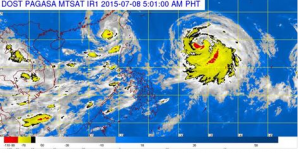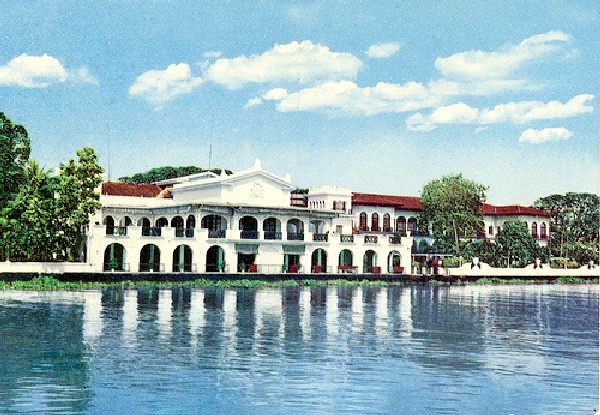
(Eagle News) – Typhoon Falcon (international name Chan Hom) has entered the country Tuesday night (July 7), with maximum sustained winds of 130 kilometers per hour and gustiness of 160 kph.
Class suspensions in all levels in Metro Manila and other areas (including Dagupan City in Pangasinan and San Mateo, Rizal) were also announced Wednesday because of this, as more rains are expected to affect the whole of Luzon.
At 4:00 am today (July 8), the eye of Typhoon Falcon was located based on all available data at 1330 km East Northeast of Aparri, Cagayan or at 1335 km East of Calayan, Cagayan.
Typhoon Falcon is even stronger than storm Egay which left the country Tuesday morning.
Falcon is forecast to move west northwest at 20 kph. It is expected to be outside the Philippine Area of Responsibility by Friday evening.
PAGASA said monsoon rains which may trigger flashfloods and landslides will be experienced over the provinces of Mindoro, Palawan, Zambales and Bataan. Light to moderate rains and thunderstorms will be experienced over Metro Manila, Mindoro, Palawan and Western Visayas. Partly cloudy to cloudy skies with isolated thunderstorms will prevail over the rest of the country.
Strong typhoon outside PAR being monitored
PAGASA is also monitoring another strong typhoon outside PAR, international name Nangka, which is reported to have maximum winds of 222 kilometers per hour.
The National Aeronautics and Space Agency (NASA) warns that typhoon Nangka could intensify further to have winds of up to 140 knots (161 mph/259.3 kph).
“At 140 knots, that would make Nangka a Category 5 typhoon on the Saffir-Simpson Wind Scale,” NASA said.
Category five hurricanes are by definition the strongest hurricanes that can form on planet Earth. They are rare in the eastern Pacific Ocean and generally form only once every several years.
If typhoon Nangka enters the country, it will be renamed “Guring.”








